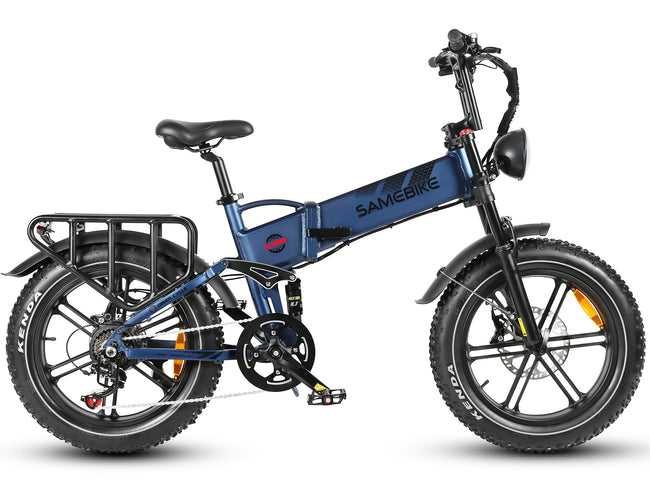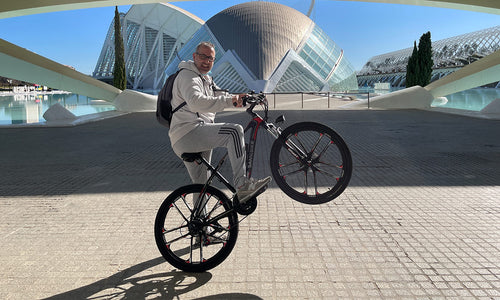Cycling in winter is a challenge but also full of fun. However, due to the harsh and changeable weather, the risks you face will also increase, bringing many unpredictable road hazards. When riding in winter, be sure to pay attention to these dangers!
1. Dark ice
In the winter, roadside shady areas sometimes have a thin layer of ice that is extremely dangerous. It is transparent and therefore difficult to see compared to snow or thicker ice. This phenomenon occurs when the temperature drops to around freezing and moisture freezes on the road, without water or rain or snowfall. When the wheel is pressed up, it is very easy to slip and the risk of an accident is high.

When the temperature is below zero, you may pay attention to whether there is ice on the road, or it is relatively safe above zero, but if the temperature hovers around zero, it is easy to let down your guard, especially when entering corners, be sure to slow down. Never brake in a corner. Front wheel slippage in particular is extremely dangerous because it can easily cause you to fall without any warning.
2. Hypothermia
In winter, the temperature difference between morning and noon is very large, and it gets dark earlier. Even if the weather is very good and the sun is shining, it will feel very cold at three or four in the afternoon. Under certain circumstances, the temperature will be above zero, above 10°C, or even higher, and you will freeze to death. One person is by no means a fantasy!
When traveling in cold weather, take appropriate wind protection measures and do not expose yourself to the cold wind. Warm hats, gloves, scarves, windproof jackets, thick socks, wind masks, and even goggles are all necessary items for traveling in windy and cold weather. . Too many body organs are exposed, and the greater the wind speed they face, the faster the loss of body heat will be. Don't overextend yourself, prevent dehydration, excessive sweating and fatigue. Replenishing body heat with food and hot water at any time is also a very useful way to prevent hypothermia.(Read:Winter Cycling Gear: Tips for Cold Weather Riding)

3. Cycling with one hand
When riding in winter, due to the cold weather, some people will use one hand to operate the handlebars and put the other hand in their pocket to keep the other hand warm, or some people will cover their ears with their hands while riding. Heating etc. These are very dangerous operations.
When riding in winter, you must choose gloves with a suitable temperature scale. Generally, you can buy suitable cycling gloves at around minus 10 degrees. If the temperature reaches below minus 10 degrees, ordinary cycling gloves will be difficult to meet for long-term riding. , you can only rely on reducing the speed, or stopping to heat your hands after riding for a period of time. In addition, using ski gloves to heat the hands is also a good way.
4. Snow
If it has snowed recently and you want to go wild in the snow, it is best to choose wider tires. Try to choose mountain tires with more teeth. Don't have too much tire inflation. Low pressure can give you more power.( Discover SAMEBIKE’s comprehensive, specialized range of fat tire snow e-bikes.)
When riding on soft snow and ice, try to stay pedaled as much as possible. When the car turns, don't turn too much. When riding in a straight line, just make a slight adjustment. In addition, the seat should not be too high. Cycling in the snow is more about having fun. Don’t pursue speed and distance. When you’re done having fun, go home and rest.

5. It’s dark and we’re still on the road
Due to the short days and long nights in winter, it gets dark in many places at four or five in the afternoon. This makes riding more dangerous. So when going out in winter, remember to plan the route and time. If you need to return at 2 o'clock in the summer, you must return at least 12 noon in advance in the winter. Remember to make sure that the car lights are fully charged. It is highly recommended to wear brightly colored clothing and reflective tape on your arms and legs to increase visibility after dark.
There is no problem riding in the winter. Of course, the effects of cold winter temperatures and weather conditions vary from person to person, and riders should act within their capabilities. After all, physical health and safety are the primary concerns.







































